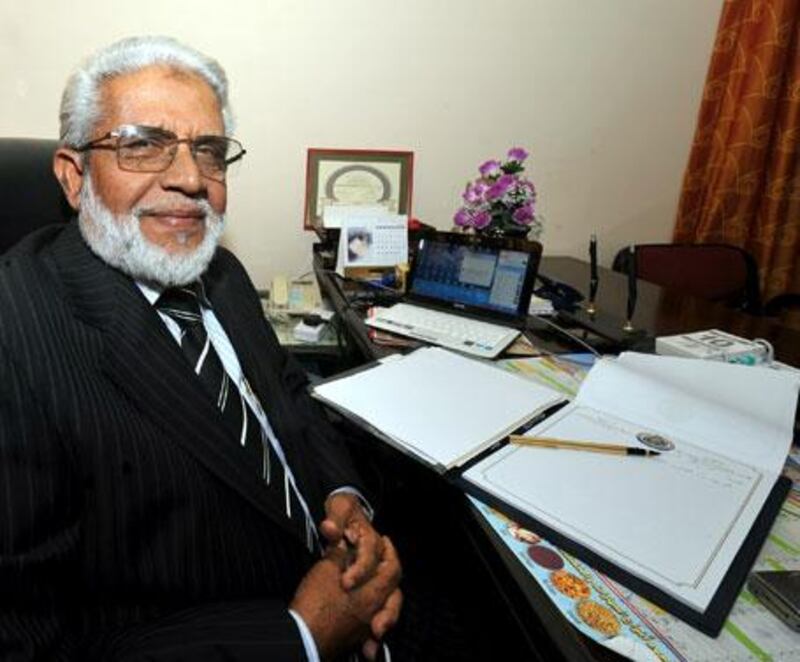DUBAI // K Hamzah Abbas remembers a country where foreign media was rare and labourers from the Indian state of Kerala were legion. And it was only 10 years ago. A decade later, Mr Abbas is one of a battalion of foreign journalists in the UAE, and Indian expatriates from his home state of Kerala increasingly are found in white-collar jobs. Certainly, the dramatic change in the Dubai skyline is worthy of note. Mr Abbas, 66, remembers when the 37-storey World Trade Centre was the only high-rise on the dusty, two-lane highway from Dubai to Abu Dhabi now known as Sheikh Zayed Road.
Now the World Trade Centre is dwarfed by dozens of skyscrapers, a development he describes as "unimaginable". But as chief editor of the Middle East edition of the Gulf Mahdyamam newspaper, a Malayalam-language publication, Mr Abbas believes the country's arrival on the world stage owes much to its embrace of the news media. He called the turn-of-the-century development of Dubai Media City and Internet City a paradigm shift in the development of the emirate and the nation.
He credits the move to Sheikh Mohammed bin Rashid, Prime Minister of the UAE and Ruler of Dubai. "The area where we have the Dubai Media City and Internet City was once just barren land," Mr Abbas said. "The opening of the Media City in 2002 welcomed the media from the world to the emirate. Organisations from around the world built some of the best offices there. This changed the image of the emirate and the country."
News broadcasts from Dubai put the country on the world map, he said. A decade ago the region had not been exposed to news-gathering operations from other nations. Mr Abbas, who was instrumental in the start-up of his newspaper's regional edition, in 2002, said there were some early hurdles. "The beginning was not easy for us," he said. "There were no special licences for foreign newspapers here. We used to often operate without proper documents of approval. It was an effort to get an approval to print and circulate here."
Nearly 10 years on, the situation has changed dramatically. "Everything is now legalised with proper licences for operation of foreign newspapers," he said. "We now have an office at Dubai Media City, a media hub of the region. "The freedom is as much as we get in India and local news content is also being included." The paper claims a circulation of over 62,000 in the UAE. Following the success of Gulf Madhyamam, several regional newspapers also began operations in the UAE.
Today, nearly a dozen South Asian newspapers, television stations and new-media outlets have offices in the UAE. Content is prepared and published in Malayalam, Urdu and other Indian languages. Mr Abbas said that the position of Keralite expatriates in the country also has changed markedly in the past decade. "Earlier, many Indians came as labourers. Now, you would find very few labourers from Kerala," he said.
"Instead, they come as skilled workers and for other white-collar jobs." He said Keralites first came to fill the UAE demand for manpower. "However, now we see that Indians are migrating to other parts of the world," he said. "I feel that the future manpower needs of the UAE may not be satisfied by India as they are moving to other countries like the US, South East Asia and Europe." However, the association between the UAE and India will continue, he said, and is getting stronger.
"India is now a major trade partner of the UAE. "Looking at the growth of the UAE, our paper is also planning new projects here that will be announced soon" @Email:pmenon@thenational.ae






